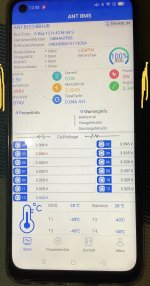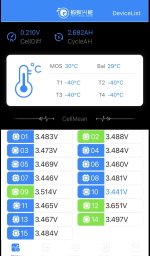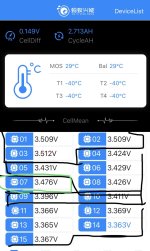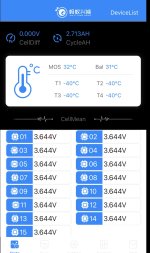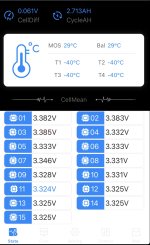Please link to the spec sheet for your four cell models.
Yes voltage vs SoC curve can vary between manufacturers, but should be slight if gkod qualit makers like CATL CALB GBS A123. Winston always did his own thing but he makes good stuff.
BareKuda said:
Also charging to 3.65v/cell doesn't hurt them. With a small load they will settle back down to the voltage they are happy at.
Well I include "drastically redjcing cycle lifespan" in my definition of "damage" even if only 2000cycles off the back end decades later.
If you don't care about that, fine you do you, but the fact is, absolutely no rational reason to, you are only getting insignificant capacity going over 3.5Vpc, single digits for sure.
If a BMS cannot be adjusted to accommodate your desired charge profile you need to get a different BMS.
Balancing could start anywhere over 3.25V if the > 3.25v is solidly on the flat part of the curve and balancing here might put you further out of balance
No. I did not say that should be your balance point. Although mid-point balancing is perfectly valid, let's not go there now.
I am saying, if top balancing, the START balancing voltage point should be low enough that the process is complete concurrent with reaching your desired charge termination voltage. Or say within 20-30min after if you have a lower quality pack, or only rarely balance charge.
> The BMS will shut it down at the voltage/cell i tell it to, which will be tuned as needed to achieve balance each charge cycle.
Really BMS should IMO not be involved in the routine charge regulation process. It should be set higher than your desired charge termination voltage as a redundant failsafe, only activated when the primary source circuitry fails.
So if charging to 3.45V, BMS HVC could be set to 3.55V.
Of course if you want your top balancing point to be 3.50V or 3.55V if your charger lets you switch profiles, maybe do that every 20 cycles or so, but personally I don't see any point going that high.
> If you owned an ANT BMS you could pull your head out of your ass and see its not fiction.
Wow, we're just having a discussion in an open forum, I am just trying to help, and not just you, no need to go aggro, nor to take anything personal!
I am talking general principles, not limited to the OP nor any specific hardware.
Are you saying ANTs are actually capable of balancing (resistance burning off) at a rate of 50A per cell? LOL
> Do you really think there is a 50ma charger for these batteries that have a $70 BMS?
Sure, lots of people use lab style PSUs or RC hobby chargers for doing maintenance procedures like balancing. In fact not having at least one adjustable charge source seems pretty odd to me for anyone serious about batteries.


